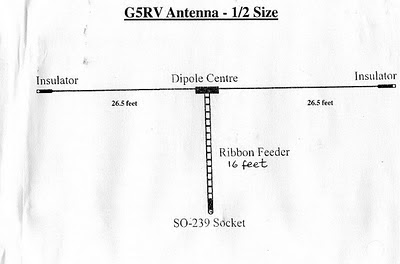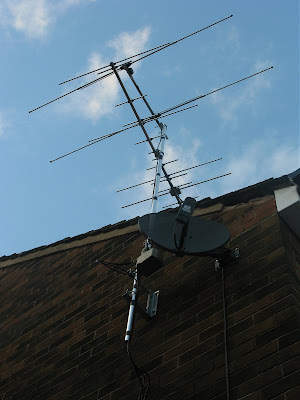
The end of an era!
I have a lot of memories here in this building, right from doing my 11 plus test here up to teaching IT there up to a few years ago. I have mixed feelings about the demise of this huge building, inside it was a maze of corridors, very claustophobic and quite depressing. I spent five years on my day-release training when I was an apprentice from 16 years old to 21 years old. Most of the time was spent in the basement rooms where the electronics labs were kept. It was awful really, you couldn't see out of the windows and in the basement were numerous workshops for bricklaying, plumbing and construction skills. Each year I would have to take my exams in the 'Great Hall'. When I finished at college in 1975 I vowed never to go back there again. I can remember some of my tutors then...Mr Smith, Mr Tudor, Mr Duncan. I remember once going up onto the roof of the college to suss out putting an antenna up to run a radio station
I took my Radio Amateur Exam 40 years ago this year here at the college!

After 15 years away from the college I found myself having to complete my GCSE English at college and did my exam in the 'Great Hall'. After I got my degree I did my teacher training PGCE. My second placement in my PGCE was here at Bolton College teaching classes in electronics, Video Recorders and CD Players. My six week placement was very enjoyable, this time I was in the same electronics labs that I did when I was an apprentice, but I was in charge!

Later, I decided to do some IT teaching at the college on Saturday mornings and also during evening classes. I taught RSA CLAIT to adults which I enjoyed a lot. The only problem was the college itself...my room was on the third floor and the staffroom was on the first floor. To get into my room I needed a key which had to be obtained and signed out in the staffroom. Trouble was in the evening that the staffroom was also locked! You can imagine the situation each week when I had to first find the staffroom key so that I could get the room key...nightmare!!

To make things worse...at 9.00pm when the class had finished I had to do the same again to return the key...and if you were not out of the building by 9.15pm you had a good chance of being locked in the building! Oh....and the key....it was on a huge block of mild steel that weighed a ton so that nobody would nick it!!
My Dad also went to Bolton College learning about textiles and weaving, like me later, he did a day release course and night school.
Well...let's face it...that building was not fot for purpose, the new college building is amazing...a step into the 21st century!

17th December 2011... now its gone!!
Saw some good bands here in the Great Hall back in the 70's I remember a band called 'Strife' who were excellent with hi-tech strobe lights.
Later, there was the monthly computer fairs in the Excel Centre, a bit crap really, nothing like the one at Bowlers at Trafford Park.
RIP Bolton Technical College!


















































